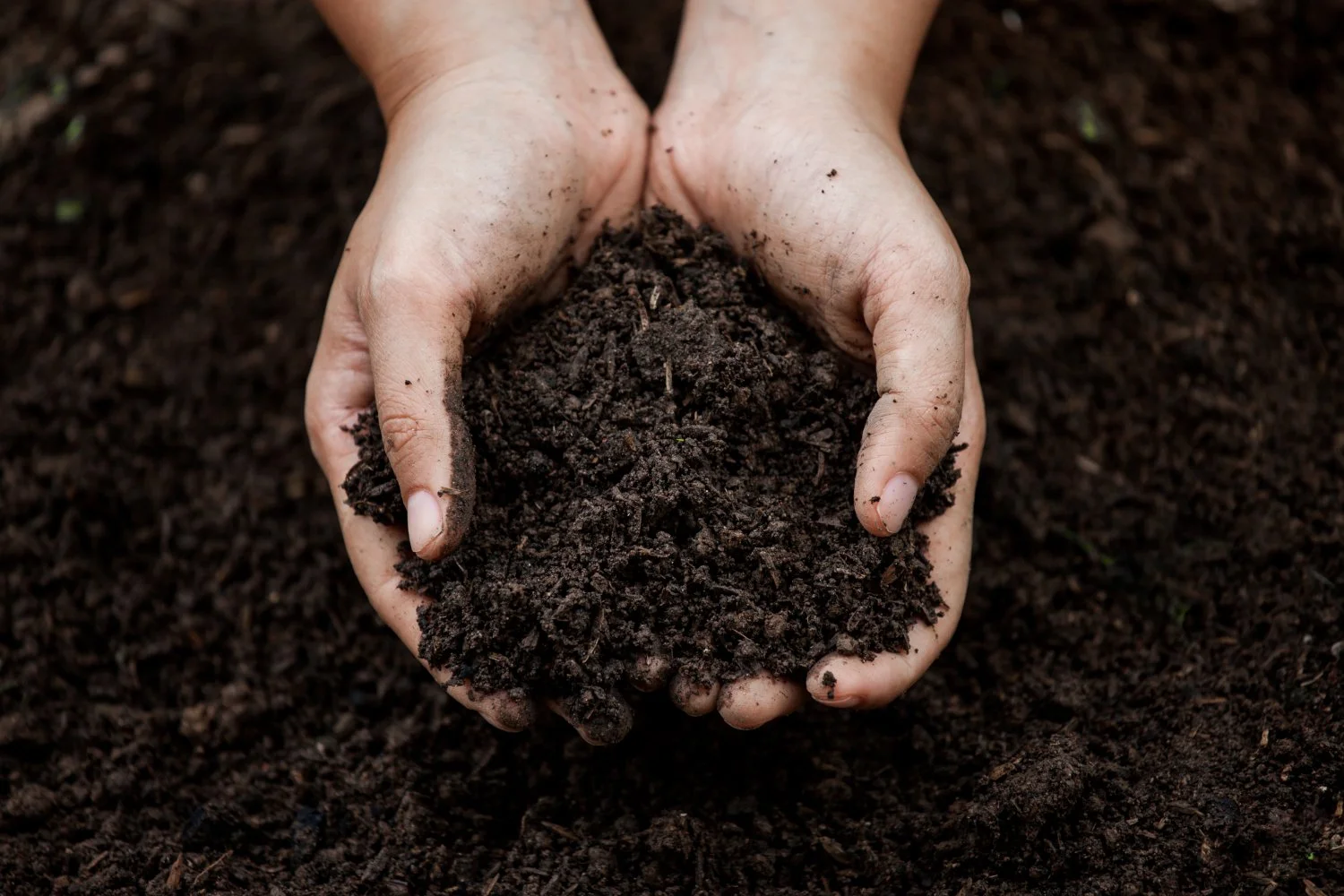March 2024
Plants are amazing! They are the perfect gift for many occasions, cheering us up with healing and calming properties. They delight us with their colours, smell good, and remind us that nature is a beautiful creation.
However, frequent replacement, imprudent treatment and inappropriate disposal can burden the environment.
Here, we have collected some tips to help you get started with a more sustainable approach to enjoying your houseplants.
WHAT ARE SUSTAINABLE HOUSEPLANTS?
Houseplants are considered sustainable when they are:
Seasonal grown - growing during a specific time, following their natural life cycle.
Locally grown - being sold and planted near where they were initially produced.
Organically produced - grown without the use of chemical pesticides and fertilisers.
SHOPPING FOR SUSTAINABLE HOUSEPLANTS
Always opt for local, domestic, and seasonal plants when shopping for potted plants. Certificates will help you spot sustainable flowers from local sources and other countries.
LOCAL SHOPS
Get plants from local nurseries rather than order them online from giant retailers.
This way, we support our local florists and the local economy.
Ask for flowers from their in-house greenery to help reduce carbon emissions, as the flowers don’t have to be transported over long distances.
Return the pots and ask to reuse them.
Refuse packing your flowers in single-use plastic. Ask to wrap them in old newspapers instead or bring some reused wrapping paper from home.
DOMESTIC PLANTS
Choose domestic plants over exotic ones. When choosing domestic plants, we support the following:
The cultivation and the diversity of local plant types.
Our native fauna by providing it with food sources.
Nurseries cultivating old species and hence contributing to retaining our regional plant heritage
The maintenance of Biodiversity →.
And, of course, it is fun and exciting to learn about the different kinds of domestic flowers that grow in our region.
FIGURE OUT WHICH PLANTS ARE DOMESTIC IN YOUR AREA
To learn about plants native to your region, browse the web for keywords such as ‘hardiness zones’, ‘climate zones’, ‘growing zones’, and ‘gardening zones’.
Platforms like the Fantastic Gardeners Blog provide an overview of domestic flowers sorted according to climate zones, while on Wikipedia, you can find domestic flowers sorted by region.
If you want to actively participate in learning about and spotting domestic flowers in your area, join organisations like Project Noah. This organisation asks citizens to support it in collecting data on domestic wildlife by spotting domestic flowers in their area.
SEASONAL PLANTS
Buy your potted plants in summer - now is your best chance to get a large selection of native plants in your region.
During winter, consider using branches with berries, pinecones, and dried flowers as excellent alternatives to fresh flowers.
Some helpful calendars provide information on which flowers grow each month or season.
Browse the web to find a seasonal calendar for your country or region, such as flowers.org (UK) or “Seasonal flowers from the greenhouse and outdoor cultivation” - oeko-fair.de (Germany)
LABELS & CERTIFICATIONS
Look for sustainability and fair trade certifications to support sustainable farming and production practices.
ORGANICALLY GROWN PLANTS
Similarly to food, strict cultivation regulations apply to organic houseplants. For example, no synthetic fertilisers or pesticides can be used.
However, finding organic plants is not easy—interest in them has not yet been as strong as it has been for Organic Food →. You will likely find them at weekly markets, specialised nurseries, farm shops, and Organic Stores →.
Identify organically grown houseplants by checking to see if they carry appropriate organic certifications.
FAIRTRADE PLANTS
If you want to buy plants that are not in season and must be imported, choose Fairtrade products. A fair trade certification implies that the employees work under better conditions.
Nurseries that produce fair trade options also use more sustainable growing practices, such as resource-saving irrigation and the restricted use of pesticides.
Some certification bodies include LEAF, GGN (extension of Global GAP), Rainforest Alliance etc.
PRE CONSIDERATIONS BEFORE GETTING A HOUSEPLANT
First, learn what to consider before deciding, and finally, get a potted house plant to figure out ‘which plant is for you’.
Do some proper research before visiting the next farmers market or the next garden centre, and ask yourself:
Evaluate your indoor environment - natural light, temperature, humidity, etc.
Evaluate the maintenance needs. And consider how much time you want to put into your houseplants.
Identify your plant goals - air quality, aesthetic appeal, specific ambience, etc.
Identify your place’s capacity to decide on sizes and numbers.
Explore different house plant types to ensure you get the best option based on your profile.
If necessary, consider toxicity, pet-friendliness or possible allergies
Being on-site to choose a plant, here is what to do:
Always start your journey as a plant keeper with a low-maintenance plant such as Petunias, Pansies, Begonias, Marigolds, Geraniums, etc.
Read plant labels to identify whether each plant’s needs align with your place’s environment and your dedication intent.
Check the plant and the soil to ensure they are healthy and pests-free.
Consider plant size; will it fit properly in your place and be practically convenient for you?
Compare the plants.
CARING OF YOUR HOUSEPLANTS
Even if your plants are not sustainably produced, do not worry. You can still improve their impact through the way you treat them. Here are some essential tips:
Use a watering can instead of a hosepipe to apply only the needed quantity and avoid water waste.
To save water, you can also collect rainwater to water your plants by storing buckets on top of your roof or in the corner of your garden.
Avoid the application of chemical pesticides. If your plants are infected, remove the deceased parts and apply natural substances such as neem oil and garlic oil spray or biological agents (natural predators) such as mites and nematodes.
Opt for natural fertiliser such as eggshells, coffee grounds or compost.
Make your compost as an organic fertiliser for your plants and save CO2 emissions.
Avoid peat products, as harvesting peat for commercial use leads to the destruction of carbon-trapping peatlands.
Use second-hand pots from thrift stores, reuse plastic pots or get creative and repurpose old utensils such as tea kettles, tins and vintage containers.
Propagate your plants to save money, avoid excess packaging, and reuse pots. Plants like ivy, monsteras, and pothos are excellent for propagating. Simply clip off a piece of the plant and put it in a little jar of water. Within a few weeks, you’ll notice roots growing from the clipping; when there are enough roots to support the plant, go ahead and replant it into a pot.
Once your perennial potted plant has withered, move it to the garden or balcony if it is hardy. Outside, its blossoms can serve as food for insects, and in the following season, it can once again delight us with its
DIY: GROWING PLANTS
We can also grow our flowers and enjoy the cycles of nature.
HOBBY - Growing plants is a meditative activity, and it also helps us appreciate their company more because we realise how much time and effort it takes to grow them.
FOOD & GIFTS - Extra value: Plants such as calendula or flax are easy to grow, undemanding, and edible - making them a great sustainable and personal gift or souvenir.
GET EDUCATED - Browse the web for tutorials and tips. “The Spruce is a beginner’s guide on how to grow flowers from seed. Check your local library for beginner grower literature targeted to your climate zone and possibilities.
GIFTING HOUSEPLANTS
Houseplants are also suitable as gifts. However, before giving one as a gift, think about whether the recipient will enjoy it or if it means extra work for them.
If a houseplant is a suitable gift, consider the following: Some plants are particularly suitable for beginners. In contrast, others require more effort, such as spraying the leaves with distilled water to prevent the calcium in tap water from clogging the pores.
succulents have minimal water needs
roses are resistant to fungal diseases
petunias are insect-resistant
herbal plants such as peppermint, rosemary, lavender and thyme are not only insect-resistant but can also work as insect repellents
Learn more about Sustainable Gifts & Gifting →.
DISPOSING OF HOUSEPLANTS
If you must dispose of your houseplants, remember they belong to organic waste or into your compost heap. However, if they have been treated with pesticides or insecticides, they must go into household waste – unfortunately, this is the case for most houseplants.
LEARN FROM THE EXPERST
Buying sustainable houseplants and caring for them in an environmentally friendly way requires some knowledge about our green companions.
Here are some first sources to help you kickstart your journey as a green plant keeper.
On Instagram, check out accounts such as blossomandbranchfarm, happyhappyhouseplant, or ecogardener.
Green with purpose
The Sill
Sustainable Jungle
Gardening Know How
“The New Plant Parent" - Darryl Cheng
"Root, Nurture, Grow: The Essential Guide to Propagating and Sharing Houseplants" - Rose Ray & Caro Langton
Ask your local nature conservancy organisation for more reliable sources, and don’t forget to check the bibliography of specialist literature for further sources.
Learn more
Check our sources: Bibliography →























